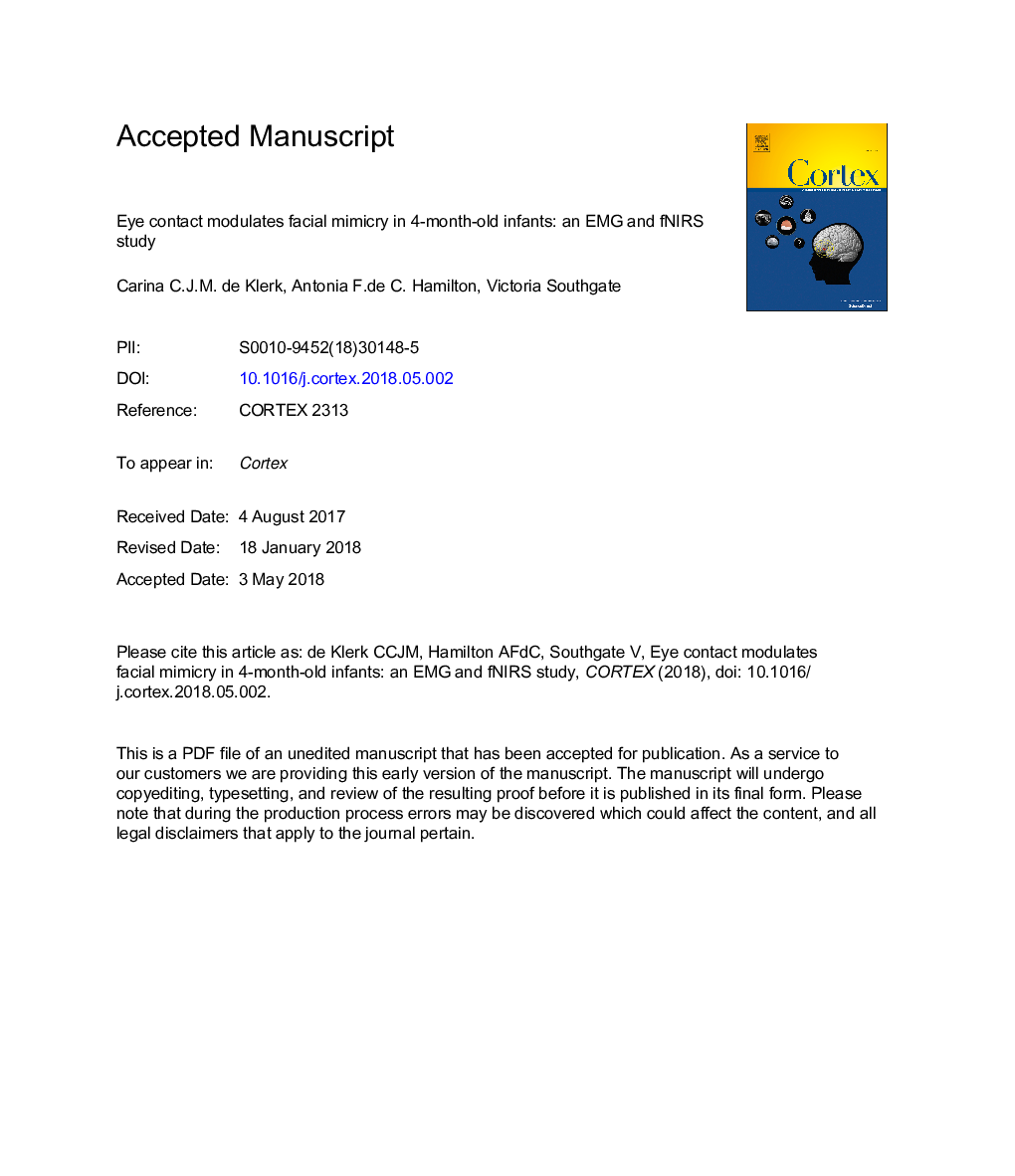| Article ID | Journal | Published Year | Pages | File Type |
|---|---|---|---|---|
| 7311262 | Cortex | 2018 | 34 Pages |
Abstract
Mimicry, the tendency to spontaneously and unconsciously copy others' behaviour, plays an important role in social interactions. It facilitates rapport between strangers, and is flexibly modulated by social signals, such as eye contact. However, little is known about the development of this phenomenon in infancy, and it is unknown whether mimicry is modulated by social signals from early in life. Here we addressed this question by presenting 4-month-old infants with videos of models performing facial actions (e.g., mouth opening, eyebrow raising) and hand actions (e.g., hand opening and closing, finger actions) accompanied by direct or averted gaze, while we measured their facial and hand muscle responses using electromyography to obtain an index of mimicry (Experiment 1). In Experiment 2 the infants observed the same stimuli while we used functional near-infrared spectroscopy to investigate the brain regions involved in modulating mimicry by eye contact. We found that 4-month-olds only showed evidence of mimicry when they observed facial actions accompanied by direct gaze. Experiment 2 suggests that this selective facial mimicry may have been associated with activation over posterior superior temporal sulcus. These findings provide the first demonstration of modulation of mimicry by social signals in young human infants, and suggest that mimicry plays an important role in social interactions from early in life.
Related Topics
Life Sciences
Neuroscience
Behavioral Neuroscience
Authors
Carina C.J.M. de Klerk, Antonia F.de C. Hamilton, Victoria Southgate,
